



















































































































































































































































On 30 August the art-for-architecture proposal “Fenestra” was presented and approved by the client. Fenestra is a fixed pictorial installation connected to a room. Although it consists of individual panels, in principle it belongs to the category of murals. This wall-painting is destined for the living room/lounge in a private dwelling in south Germany and relates to the identity of the house and its residents, but in particular to the formal characteristics of the living room/lounge. In the first step, a study was produced for a wall design of panels which relate to an unusual window in the living room/lounge.

room/lounge
13-07-001

living room/lounge
13-07-002

living room/lounge
13-07-003

the wall design (A)
13-07-004
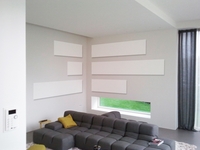
the wall design (B)
13-07-005

the wall design (C)
13-07-006
In the second step a new approach was pursued that corresponds more closely to the lifestyle and way of living of the residents, their experience of the space, their communication, the lines of force, the lines of viewing and the lines of movement. The defining measure for the wall painting was the existing identity of space and light as it is perceived by the residents. In a further study several paths were taken towards finding a solution.

the wall design (A)
13-07-007

the wall design (B)
13-07-008

the wall design (C)
13-07-009
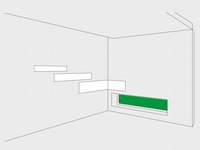
the wall design (D)
13-07-010

the wall design (E)
13-07-011

the wall design (F)
13-07-012
In the third step an arrangement of support surfaces was chosen that closely matches the residents, their manner of life and their expectations in regard to experiencing a domestic space. A decision was taken in favour of a solution with restrained suggestive power to create an encounter with a slowing-down, contemplative effect. This wall design for the support surfaces is the platform for a colour painting that also makes use of colour impressions outside the wall painting for the visual experience.
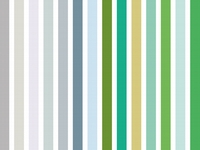
13-07-013
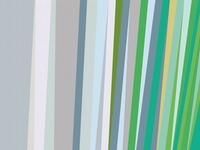
colour sequence
13-07-014

on the panels
13-07-015

installation
with sunny daylight
13-07-016
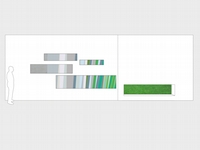
installation
with grey daylight
13-07-017

installation
at night
13-07-018
The idea behind this design:
The living room/lounge has a large window-wall to provide light and a smaller window opening to provide a view. The prospect that is offered here goes counter to conventional expectations of a view through a window. The beholder is not faced with a panorama but with an excerpt from a view that conveys an abstract form of the outdoors. In its low-lying position and extreme proportions, the window diverges from traditional ideas of our millennia-old culture of windows. As an interface between inside and outside, it does not provide a view of a random external world, but guides the gaze to the ground. The ground on which we stand, the ground as the link between inside and outside – here the floor, there the earth – is the theme of the window.
This window function is close to the perception of a door. However, while a door is for physical exchange between inside and outside, for passing through, here the only connection between interior and exterior is visual. The window is a purely visual agent. In this respect the window is a picture. The surfaces for the wall painting relate to this. They take up the extreme proportions of the window, enlarge them and reduce them. Corresponding to the pictorial function of the window, the individual surfaces fulfil the function of a picture. The picture is a window, the window is a picture. This dialectic fully incorporates the real window into the scheme of the wall painting.
The conscious emphasis on the visual in the window principle enhances the significance of colour, the only exclusively visual parameter of reality. The window opens up a view of a patch of lawn, and thus of monochrome green. The role of green in the wall painting arises from this. It creates a movement of green that can be read as an intensification towards the window or as an ebbing away from the window into the room. In this painting green appears in several nuances which act as mutual enhancement. Conversely, the green is complemented by other colours, which relativise and mute it, making a movement of green possible. The chromatic scheme instrumentalises the colours of the surroundings, inside and outside, and allows them to resound in the entire colour harmony. Intense green is the pole at one end of the colour movement, whereas unpainted canvas is the other end. What lies between is not an even continuum but has steps and breaks that provide lively imaginary views of depth. This constitutes the epic dimension of the wall painting.











































